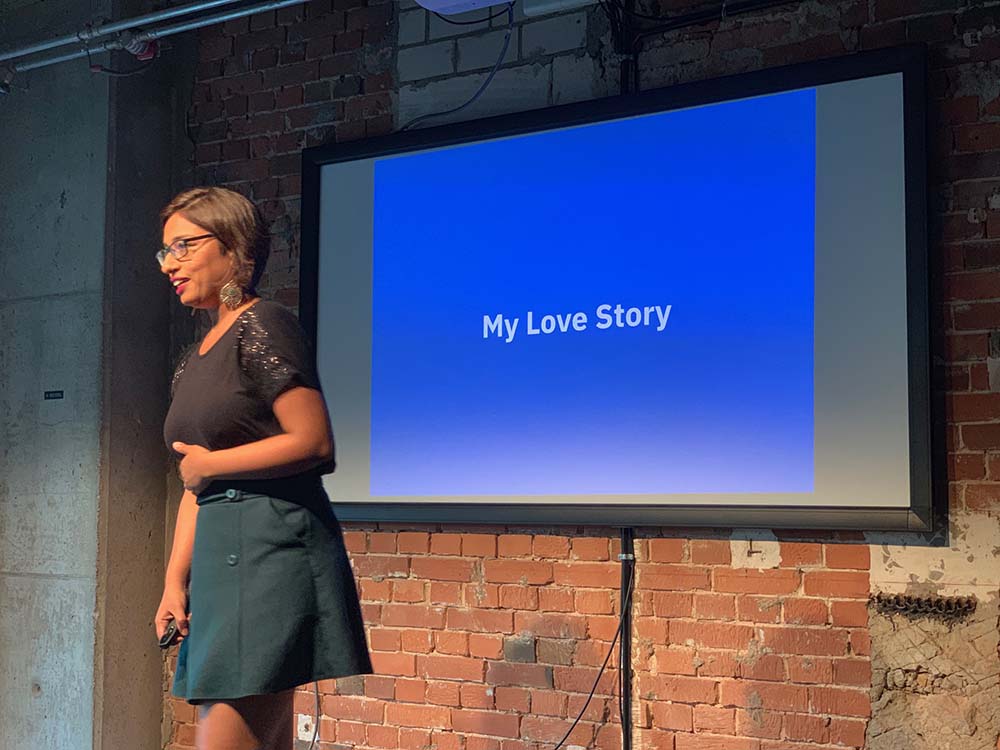If you have been following this blog for a while, you might have noticed that storytelling and content design are among the topics I care about most. And so are women in tech, female entrepreneurs and creators, and the networks that connect and empower them. It is no surprise, therefore, that I was very enthusiastic about the latest Rockchain event in Berlin.
For those of you not in the know, Rockchain is a professional network connecting influential women operating in different industries and sectors. Their aim is to encourage women to share their success, inspire one another, and feel empowered to be more conscientious leaders. Rockchain events are indeed inspirational and empowering, and always focused on projects that break new ground in their respective fields. Their June 11th event that took place at Factory revolved around storytelling and content design, at a time when – to quote the headline of the event itself – “content is king, but data is the queen, and the lady rules the house”.
Among the topics addressed by an exceptional panel of keynote speakers, two stood out and felt particularly compelling, from my perspective as a professional storyteller: the emotional side of storytelling and its visual aspects.

Storytelling is like falling in love
According to Diksha Dutta, business journalist, workplace coach and consulting editor of Dataconomy Media storytelling is like falling in love. And this is not just a catchy metaphor; there’s actual science behind it. As it happens, storytelling – the more effective variety at least – has been proven to increase the production of three substances in our brain; the hormones oxytocin and endorphins, and the neurotransmitter dopamine, which are also triggered by the experience we collectively refer to as “falling in love”. This means that the bond that is created between a storyteller and their audience is not unlike the relationship between two people forming a romantic connection.
This concept resonated deeply with me, as it has long been my belief that as a race, we are not only social animals, but also “narrative” animals. We gather around the stories that we tell each other, we use them to fuel and maintain our complex network of interaction, to find our place in the world, to build a viable image of ourselves and to project expectations, fears, and hopes for our future. To do this, each act of storytelling requires the establishing of a relationship based on trust and empathy. In short, it requires love. If we don’t agree to fall in love with each other, at least for the brief time of our narrative exchange, we can’t effectively share our stories.
Data is the queen
A second, intriguing point was made by Sabine Devins, Chief Editor at Infographics Group, who shared her Lessons Learned from Data-driven Storytelling. As a journalist, Sabine has a deeply professional approach to storytelling, which she bases on data, rigorous journalist practice, and technology. Lately, she focuses on visual storytelling, employing technology and design to create powerful, effective, data-driven content.
If you are skeptical that storytelling through data, with laser-focused goals, is comparable with the act of falling in love, you’ve likely overlooked an important characteristic that both visions share: Science. One cannot deny the similarities with regards to the neurological effects of storytelling and falling in love: the chemical reactions are one and the same.
With an equally scientific approach as Diksha, Sabine has been focusing on the mechanisms of effective storytelling. What do successful instances of storytelling have in common? Can we find patterns and identify elements of quality? How do we define – and ultimately create – value? How do we measure the impact and trends that are generated by and around storytelling?
Data matters because the quality and quantity that we share, and the way in which we package it, determine the emotional impact of the stories we tell.
Consider air travel. If we were to embark on a project to build a new runaway for a major airport – as is the case with Heathrow – there are a number of angles we might consider. We could focus on the data concerning the number of flights connecting that hub with the rest of the world, and their impact on local and global economies. Or we could focus on the fact that, according to many sources, we need to fly less in order to reduce our carbon footprint and preserve the planet, and therefore we should be optimising existing air traffic, rather than encouraging more to develop.
The data we choose to gather and share inform the quality of our storytelling, and should be in turn informed by our goals and used consciously and competently to provide valuable and relevant content.

Conclusions
Is there a moral to this story? Not necessarily, nor is it necessary for every story to have one, but it does prompt a reflection on storytelling as the most powerful means we have for the creation of meaning and the constant crafting of new tools with which we interpret and understand reality. Is storytelling as deeply ingrained into our human brains as our most vital biological functions? I would argue that it is, which makes it even more important to understand its inner workings. Will understanding such mechanisms change the way we tell stories? Probably. And I can’t wait to see where that change will lead us.






